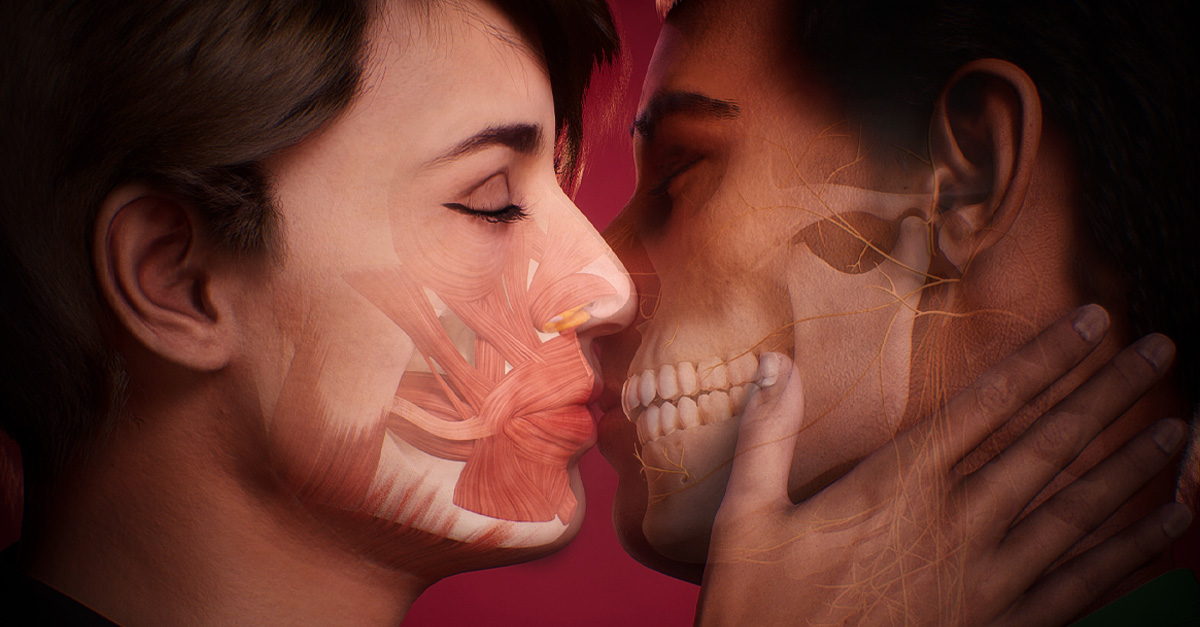
July 6th marks International Kissing Day! Often, we don’t think about what goes into this simple way of showing affection, but in reality a lot happens underneath the skin when it comes to puckering up.
The main muscle involved in kissing is your orbicularis oris. This is the muscle that outlines the mouth and changes shape based on how you move your mouth. Thus, it is responsible for puckering your lips when you kiss. This is however, only one of the functioning parts of a kiss…
About 2/3 of people tip their heads to the right while kissing. So, this involves using the muscles in your head, neck and shoulders to tilt your head. From this action you avoid your nose colliding with the nose of your partner.
More muscles on the face also play a part in more involved kisses. Zygomaticus major, zygomaticus minor, and levator labii superioris all pull your upper lip and the corners of the mouth upward. Alternatively, depressor labii inferioris and depressor anguli oris pull the corners of the mouth and lower lip down. If opening the mouth, the lateral pterygoid pulls the mandible down. The masseter, temporalis and medial pterygoid close the mouth. Lastly, the genioglossus, styloglossus, palatoglossus and hyoglossus move your tongue around.
The main nerve innervating your kisses is the facial nerve. It carries messages between the muscles and brain ultimately resulting in your brain producing several different hormones.
Oxytocin, dopamine, serotonin, and adrenaline all work together with natural endorphins to produce the euphoric feeling a kiss leaves you with. Additionally, your heart rate increases, and your blood vessels dilate so your body receives more oxygen.
So, whether you are puckering up to show your love, for luck, or to say hello and goodbye, know that your body is working hard to give you the warm fuzzy feeling that comes with this caress of the lips. 💋
